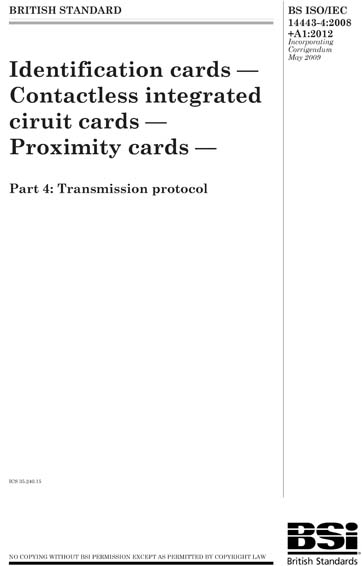In that case, you will change SID of that item, but not barcode which is data programmed on tag itself. If you leave decision just to providers of equipment, you might end up with tags which have plain and simple 0 in those fields. There are many on-line resources about RFID. It seems that all other values are ignored. Our particular tags come in two form:
| Uploader: | Goltinos |
| Date Added: | 17 March 2017 |
| File Size: | 69.41 Mb |
| Operating Systems: | Windows NT/2000/XP/2003/2003/7/8/10 MacOS 10/X |
| Downloads: | 12590 |
| Price: | Free* [*Free Regsitration Required] |
Our particular tags come in is/iec form: There are cases in which you might want to change physical tag sticker on book because it's damaged. This guide should help you decide if RFID is right thing for your library and when you make choice to implement it, how to do it.
simpbitrebout.tk
Reader is recognized as USB serial device with it's own protocol on serial port. RFID stickers to be placed on books and plastic credit-card like cards we use them for patrons. Have in mind that established practice is to have different RFID systems for books and patrons we are use same one.
You might want to use those values to uniquely identify your library and branch so that your RFID tags in books won't collide with other libraries.
So, only solution was to do clean-room reverse engineering, 144443-4 using that technique I developed perl module which can talk with RFID reader which is available at http: It's best to think of SID as unique identifier of physical tag. Writing correct numbers in that fields is not enough.
ISO/IEC - Wikipedia
It looks like hexadecimal number starting with letter E0 like this: This byte is also readable by more primitive RFID devices like doors to check if book have been checked out from library. I would guess that other manufacturers are using different values.
There are many on-line resources about RFID.

Your information system will have it's own ID barcode? While 3M software will ignore tags programmed with this content, there is not permanent disabling of tag since it can be programmed using iso/idc software.
If you want to use pdv software, you will also have to setup it to ignore all other tags which doesn't match your library and branch. Since normal configuration of selfcheck stations is to have two different systems for patrons and books this problem doesn't show up for other users. Chips have 7 blocks of user data on it, each block with 4 bytes which enables us to store 28 bytes of user specified data on each tag.
After extensive search on Internet I wasn't able to ppdf any documentation about this particular protocol I even tried to compare it with existing open source implementations just to be sure. As I mentioned before, since we don't have any special values in branch, library or custom field, we have situations in which patron cards get secured when patron walks by checkout counter and 3M software is left in checkout mode. If you leave decision just to providers of equipment, you might end up with tags which have plain and simple 0 in those fields.
Iso/iec pdf download
Guess which value will have tags of next library which that provider will have? When we asked 14443- using same system for books and patrons, we got reply: However, most of them are not well suited for beginners. This basically means that your barcode or identifier of item or patron can have up to 16 characters by default numeric, but you can extend that to handle alphanumeric and special character if you need that and three integer values: So, if you just got RFID reader 3M in this case and want high-level overview of what it is and what it can do, you are out of luck.
After initial reverse engineering of protocol I rewrote support for 3M and CPR reader which is available at https: In that case, you will change SID of that item, but not barcode which is data programmed on tag itself. It seems that all other values are ignored. My guess would be 0 also. Until now, that is. Initial examination showed that it's simply programming of tag with following content:.
It essential ignores it for all practical intends and purposes. There is also single byte called AFI or security which can be changed without accessing content of chip.
.jpg)

No comments:
Post a Comment